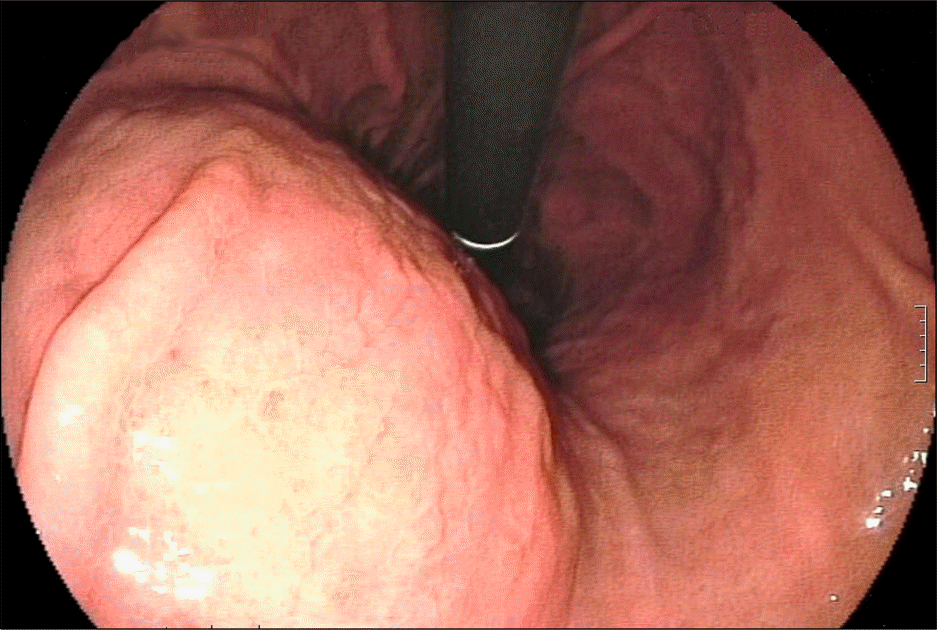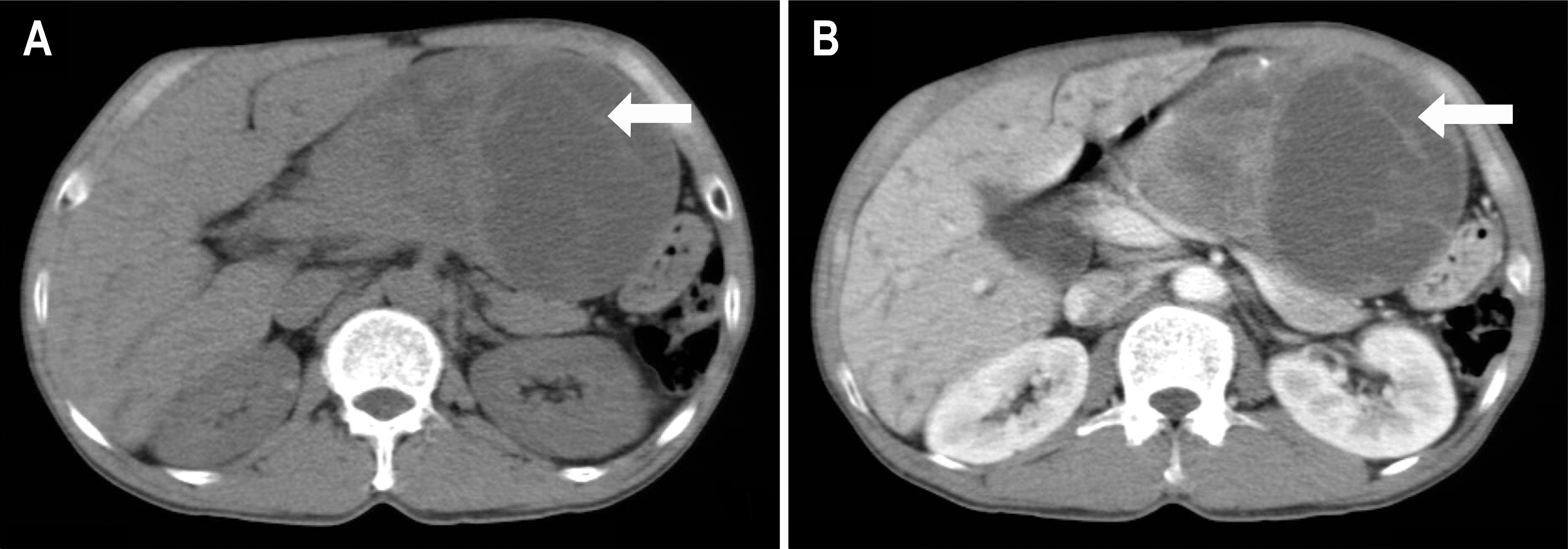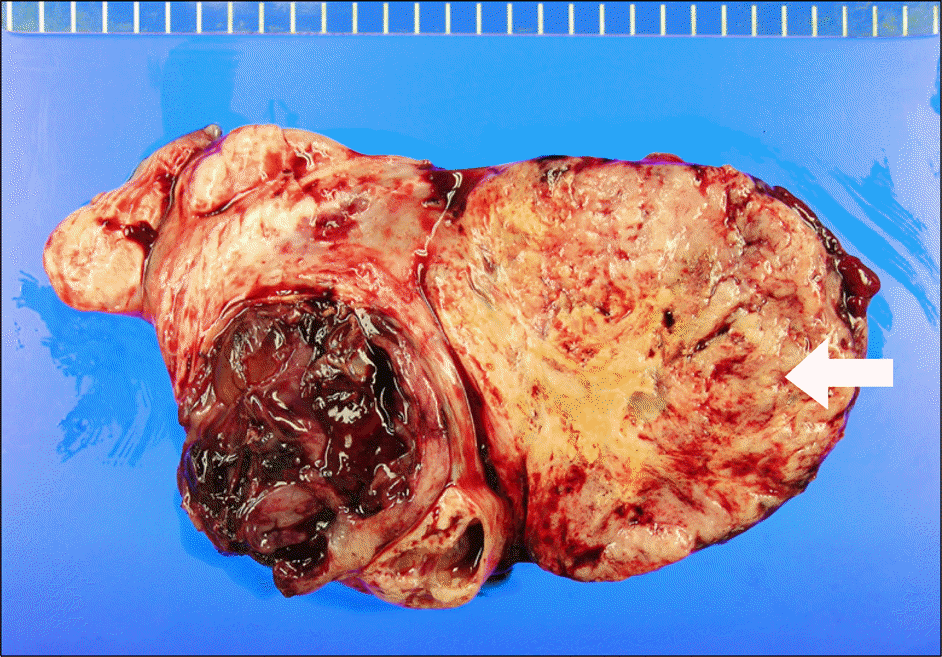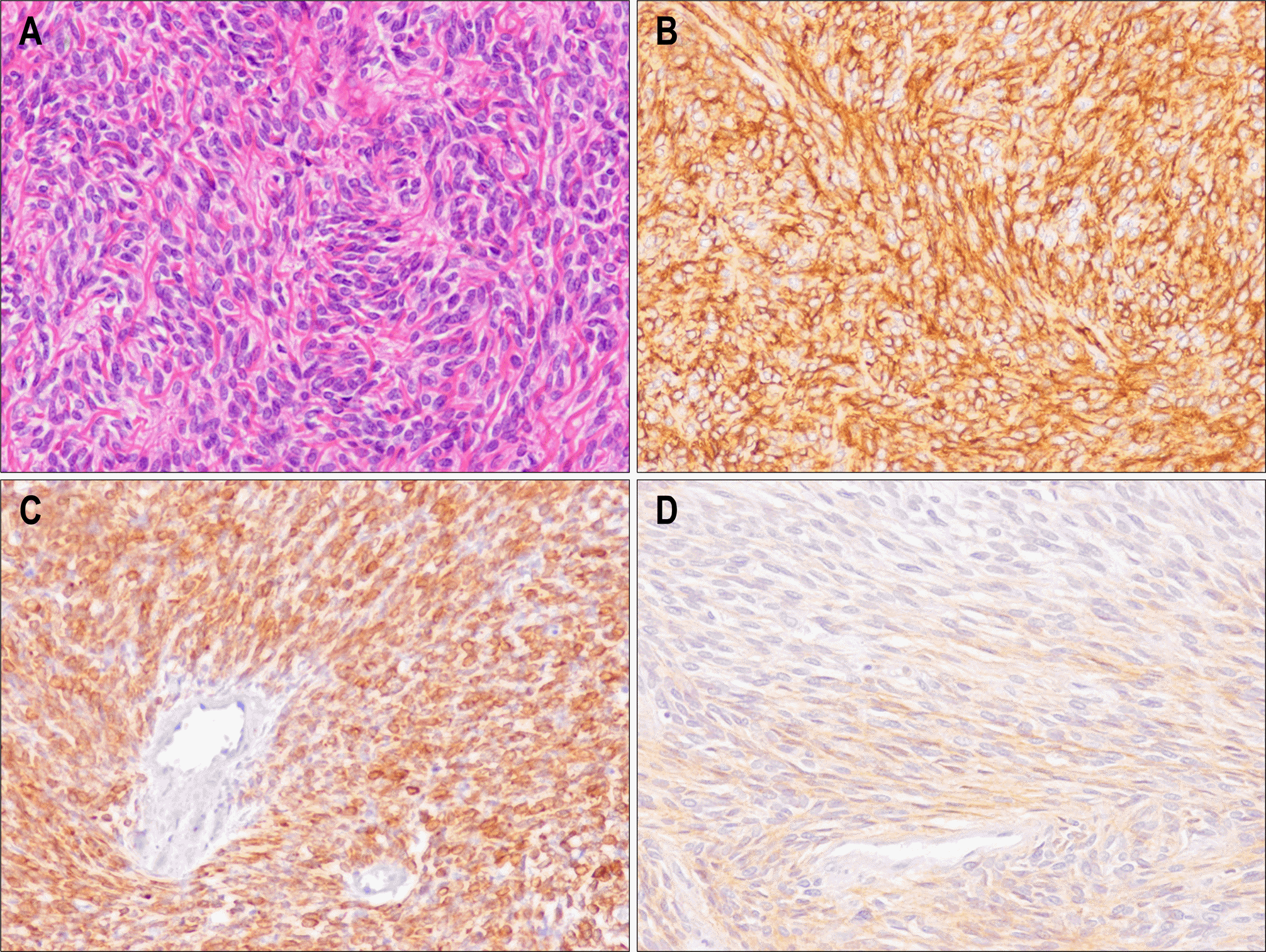Abstract
Solitary fibrous tumors (SFTs) are an uncommon neoplasm characterized by the proliferation of spindle cells. The diagnostic criteria of malignant solitary fibrous tumors (MSFTs) include high cellularity, high mitotic activity (4>10 HPF), pleomorphism, hemorrhage and necrosis. This tumor frequently involves the pleura and MSFTs of retroperitoneum mimicking gastric submucosal tumor are very rare. We report a rare case of MSFT that presented as a gastric submucosal tumor. A gastroscopic examination showed a large bulging mucosa in the gastric body. Abdominal computed tomography revealed a well-defined heterogeneous enhancing mass between the left hepatic lobe and gastric body. Surgical resection was performed and histologic features were consistent with a MSFT.
Go to : 
References
1. England DM, Hochholzer L, McCarthy MJ. Localized benign and malignant fibrous tumors of the pleura. A clinicopathologic review of 223 cases. Am J Surg Pathol. 1989; 13:640–658.
2. Young RH, Clement PB, McCaughey WT. Solitary fibrous tumors ('fibrous mesotheliomas') of the peritoneum. A report of three cases and a review of the literature. Arch Pathol Lab Med. 1990; 114:493–495.
3. Hasegawa T, Matsuno Y, Shimoda T, Hasegawa F, Sano T, Hirohashi S. Extrathoracic solitary fibrous tumors: their histological variability and potentially aggressive behavior. Hum Pathol. 1999; 30:1464–1473.

4. Tanaka M, Sawai H, Okada Y, et al. Malignant solitary fibrous tumor originating from the peritoneum and review of the literature. Med Sci Monit. 2006; 12:CS95–98.
5. Cardinale L, Allasia M, Ardissone F, et al. CT features of solitary fibrous tumour of the pleura: experience in 26 patients. Radiol Med. 2006; 111:640–650.

6. Hanau CA, Miettinen M. Solitary fibrous tumor: histological and immunohistochemical spectrum of benign and malignant variants presenting at different sites. Hum Pathol. 1995; 26:440–449.

7. Chan JK. Solitary fibrous tumour–everywhere, and a diagnosis in vogue. Histopathology. 1997; 31:568–576.
8. Kishi K, Homma S, Tanimura S, Matsushita H, Nakata K. Hypoglycemia induced by secretion of high molecular weight insulin-like growth factor-II from a malignant solitary fibrous tumor of the pleura. Intern Med. 2001; 40:341–344.

9. Vallat-Decouvelaere AV, Dry SM, Fletcher CD. Atypical and malignant solitary fibrous tumors in extrathoracic locations: evidence of their comparability to intra-thoracic tumors. Am J Surg Pathol. 1998; 22:1501–1511.
Go to : 
 | Fig. 1.Gastroscopic finding showed huge bulging mucosa in the lesser curvature side of the gastric body. |
 | Fig. 2.Abdominal CT findings. (A) Non-contrast abdominal CT showed a heterogenous mass like lesion (white arrow). (B) Contrast abdominal CT showed a well-defined heterogeneous enhancing mass, about 10 cm in size between the left hepatic lobe and the lesser curvature side of the gastric body (white arrow). |
 | Fig. 3.Gross appearance of cut surface showed yellowish white solid mass with focal area of cystic change and necrosis (white arrow). The tumor was 22.0×12.0×5.0 cm in size. |
 | Fig. 4.Histopathologic findings. (A) This histopathologic features were consistent with spindle shaped cells (H&E, ×200), (B) The tumor cells showed strong positive staining for CD34 (×200), (C) The tumor cells showed strong positive staining for Bcl-2 (×200),(D) The tumor cells showed focally weak positive staining for CD99 (×200). |




 PDF
PDF ePub
ePub Citation
Citation Print
Print


 XML Download
XML Download